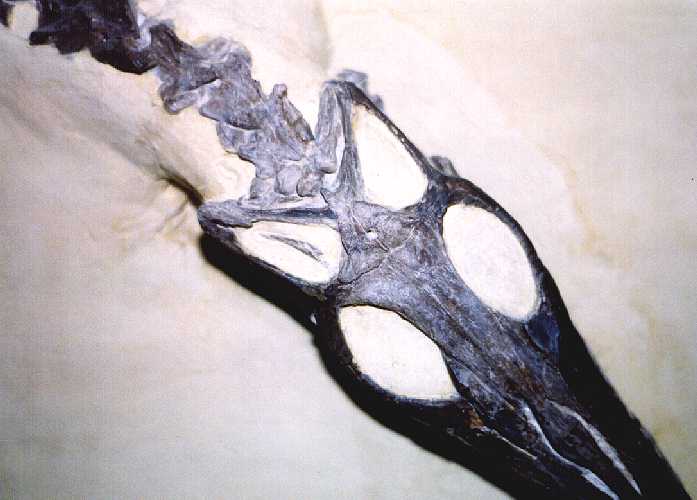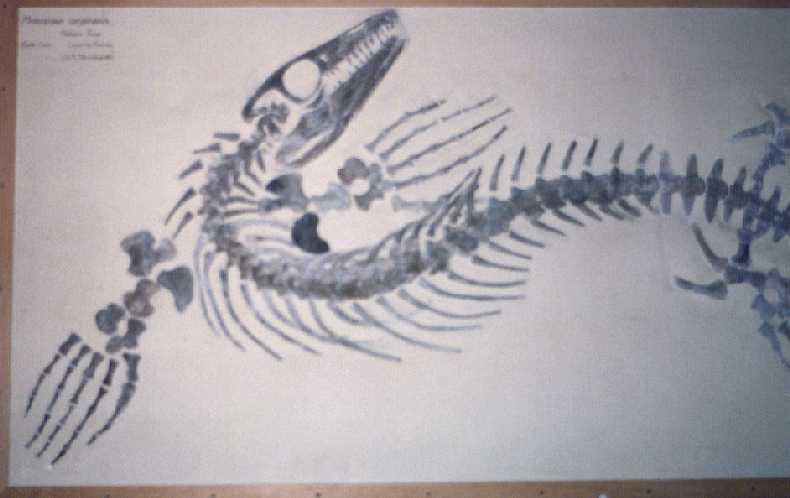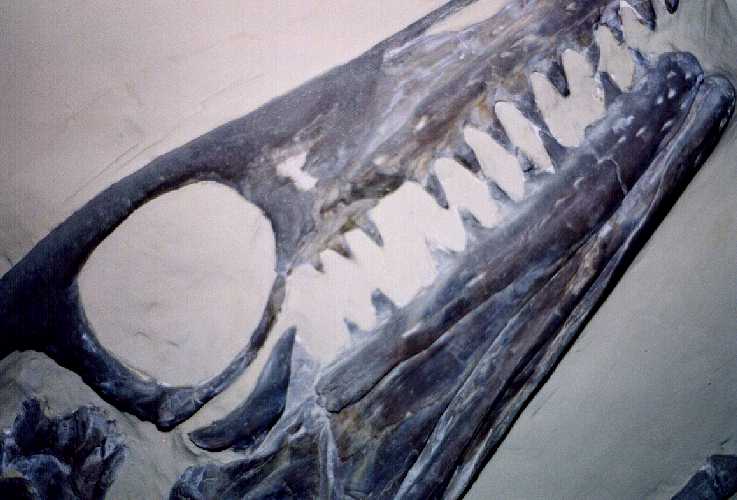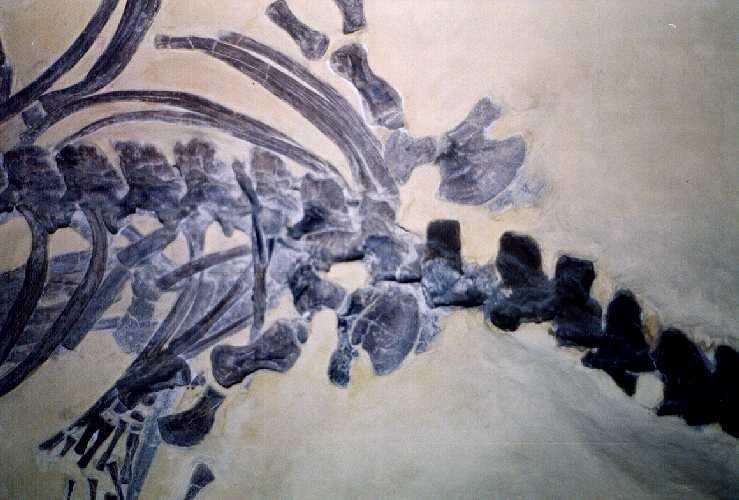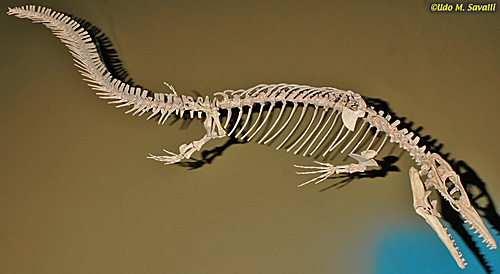[Recent Entries][Archive][Friends][User Info]
Below are the 2 most recent journal entries recorded in the "Сообщество, посвящённое ра" journal:| January 28th, 2014 | |
|---|---|
| 02:02 pm [industrialterro] [Link] |
Eonatator Eonatator is a genus of halisaurine mosasaur from the Upper Cretaceous of North America and Europe. Originally, this taxon was included within Halisaurus, but was placed in its own genus. Eonatator is presently known from the Smoky Hill Chalk Member of the Niobrara Chalk Formation (Upper Coniacian - Lower Campanian) of Kansas, from the Eutaw Formation (Santonian) and Mooreville Chalk Formation (Selma Group; Santonian-Lower Campanian) of Alabama, and from the Kristianstad Basin of southern Sweden (late early Campanian). The name Eonatator means "dawn swimmer" (Greek eos = dawn + Latin natator = swimmer). At this time it contains only a single species, E. sternbergii. The species is named in honour of Charles H. Sternberg and his son, Levi, who discovered the type specimen in the Niobrara Chalk during the summer of 1918. Like many mosasaurs, this genus has a complicated taxonomic history. The type specimen (UPI R 163, Uppsala University Palaeontological Institute, Uppsala, Sweden), a nearly complete skeleton, was originally referred to the genus Clidastes by Wiman and then to Halisaurus by Russell. Hence, Clidastes sternbergii became Halisaurus sternbergii. However, by the late 1980s, some paleontologists began to suggest that H. sternbergii belonged in its own genus and that Halisaurus was polyphyletic. Bardet et al. (2005, p. 465) diagnose Eonatator sternbergii as follows: "Ambiguous characters: premaxilla-maxilla lateral suture ending posterior to 9th maxillary teeth; tail about 40% of the head and trunk length (convergent in mosasaurines); caudal vertebra length greater than width; fewer than four pygal vertebrae; femur length about twice distal width (convergent in Clidastes). Autapomorphies: parietal with smooth triangular table extending very far posteriorly, bearing medium-sized circular foramen, located at distance twice its diameter from the frontal-parietal suture, and surrounded anteriorly and posteriorly by two parallel ridges; rounded quadrate with regularly convex tympanic ala (wing); vertebral formula: seven cervicals, 24 dorsals, four pygals, 28 median caudals and at least 41 terminal caudals; humerus length approximately 2.5x distal width." A cladistic analysis of the Halisaurinae has indicated that Eonatator is the sister group to the clade Halisaurus and that it represents one of the most basal of known mosasaur taxa. Eonatator was among the smaller mosasaurs. The length of the type skeleton, which represents an adult, is only 2.65 meters in length. Like many mosasaurs, it likely fed primarily on fish and smaller marine reptiles.
Tags: Вымершие рептилии, Мел, варанообразные, диапсиды, лепидозавроморфы, лепидозавры, мозазавриды, мозазавроиды, хализавры, чешуйчатые, ящерицы |
| January 18th, 2014 | |
| 07:16 pm [industrialterro] [Link] |
Halisaurus Halisaurus ("Ocean Lizard") is an extinct genus of marine lizard belonging to the mosasaur family. With a length of 3–4 m (10–13 ft), it was small compared to most other mosasaurs. It was named by Othniel Charles Marsh in 1869, but renamed Baptosaurus by Marsh in 1870, who thought the name was already in use (preoccupied) by a fish named Halosaurus. According to modern rules, a difference of a letter is enough and the substitute name is unneeded. Halisaurinae is a subfamily of mosasaurs, a diverse group of Late Cretaceous marine squamates. Bardet et al. (2005, p. 464) diagnosed the Halsaurinae as all mosasaurs more closely related to Halisaurus than Moanasaurus. Unambiguous character states were listed as follows: "premaxilla-maxilla sutural contact vertical anteriorly, oblique at midpoint and horizontal posteriorly; contact plane between the parietal and the supratemporal oblique; preaxial ridge extending on two-thirds of the length of the radius; tibia and fibula long and slender with slightly expanded extremities. Ambiguous characters include "dorsal median ridge borne on the anterior two-thirds of the frontal; frontal with ventral boss; parietal foramen surrounded by a ventral boss; quadrate with large infrastapedial process; coalescent infra- and suprastapedial processes of quadrate; zygosphene-zygantrum complex absent; synapophyses of the cervical vertebrae extending ventrally to the ventral surface of the centrum; fused haemal spines." Designation of this subfamily followed many decades of confusion surrounding the type genus, Halisaurus, especially H. sternbergii, a species from the Mooreville Chalk Formation of Alabama and the Niobrara Chalk of Kansas. Originally, the species had been referred to the mosasaurine Clidastes, then to Halisaurus (Russell, 1967; p. 369 ), which was also considered a member of the Mosasaurinae at that time. Later workers questioned the phylogenetic position and monophyly of Halisaurus, in part because of striking morphological differences between H. sternbergii and the other known species of the taxon. Finally, Bardet et al. (2004) determined that H. sternbergii was not conspecific with the other members of the genus and erected a new genus, Eonatator, as well a new subfamily, consisting of Eonatator and Halisaurus. Halisaurines (as members of this subfamily are collectively and informally known) were small to medium-sized mosasaurs averaging 4,5 - 6+ meters in length. Of all known mosasaurids, they were the least adapted to a marine lifestyle. Halisaurines are known from North America, Europe, South America, and Africa. The earliest known remains of halisaurines occur in rocks of Santonian age and the subfamily persists until the latest Maastrichtian. The etymology of this group derives from the genus Halisaurus (Greek halis = "sea" + Greek sauros = "lizard"). Мозазавры (Mosasauridae) — вымершее семейство ящериц (Lacertilia). Близкие родственники современных варанов. Мозазавры были приспособлены к обитанию в водной среде: тело имело обтекаемую форму, а конечности были преобразованы в ласты. Существовали в меловом периоде. Останки обнаружены на всех континентах, включая Антарктиду. Предположительный предок мозазавров найден в отложениях нижнего мела Японии. В его качестве рассматривают мелкую водную ящерицу каганаиас (Kaganaias), обладавшую телом змеевидной формы и короткими конечностями. Длина мозазавров колеблется от 3 м до 17 м. Самые крупные представители мозазавридов — тилозавр (15—25 м), гайнозавр и мозазавр (оба до 17 м). Мозазавры заняли многие экологические ниши в морях мелового периода. Главным образом это были ниши хищников крупных и средних размеров. Но некоторые виды, как например глобиденс (Globidens), зубы которого были шаровидной, удобной для раскусывания раковин моллюсков формы, освоили ниши «моллюскоедов». Halisaurus arambourgi — вид, живший в конце мелового периода около 70-65 млн лет назад на территории современного Марокко. ( Read More ) Tags: Вымершие рептилии, Мел, варанообразные, диапсиды, лепидозавроморфы, лепидозавры, мозазавриды, мозазавроиды, хализавры, чешуйчатые, ящерицы |

